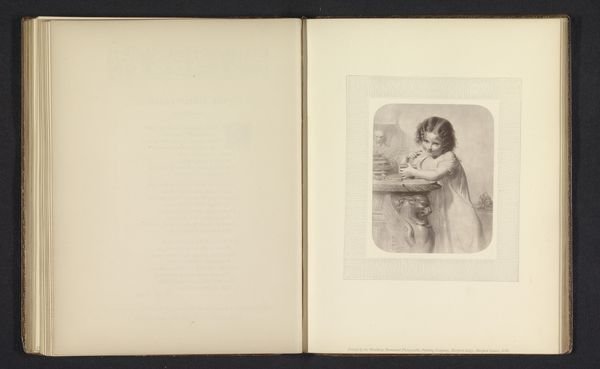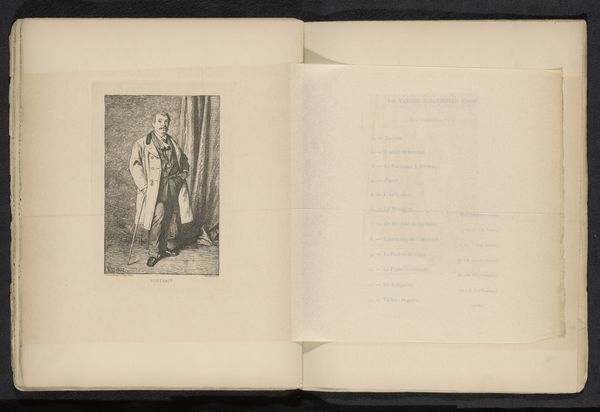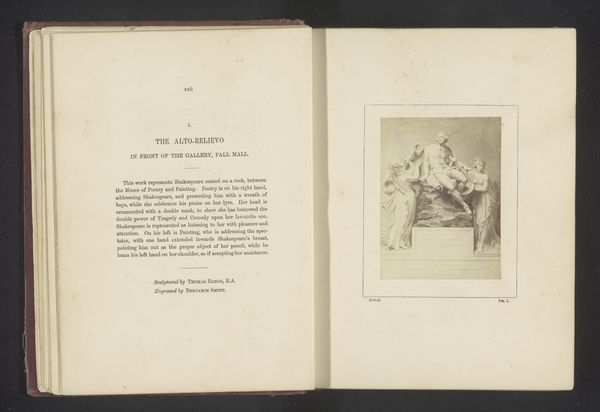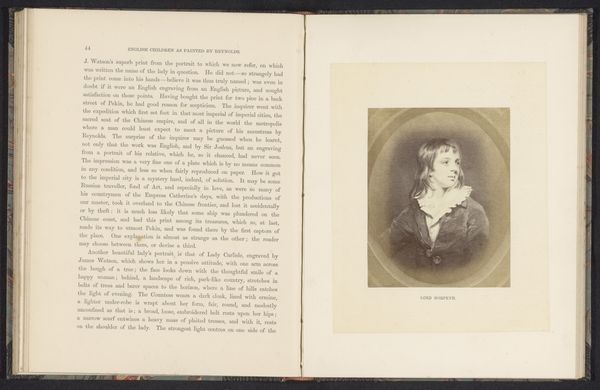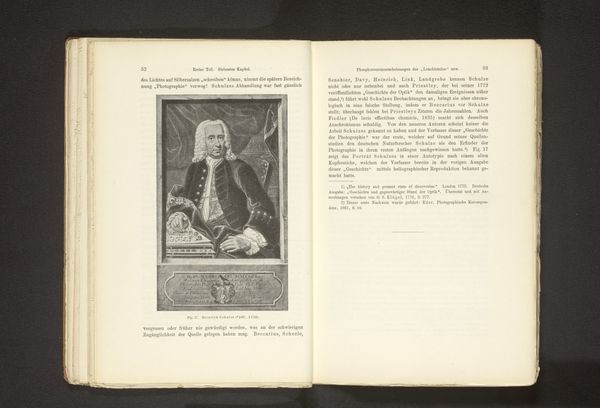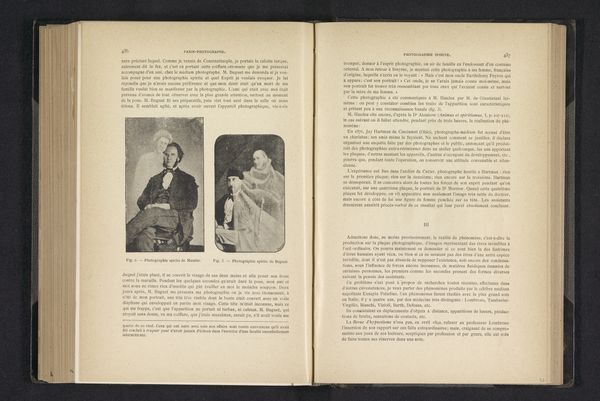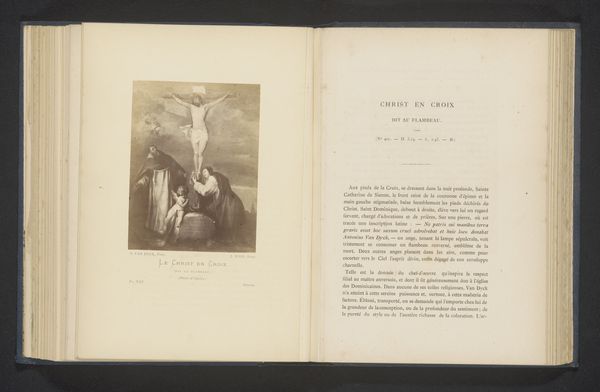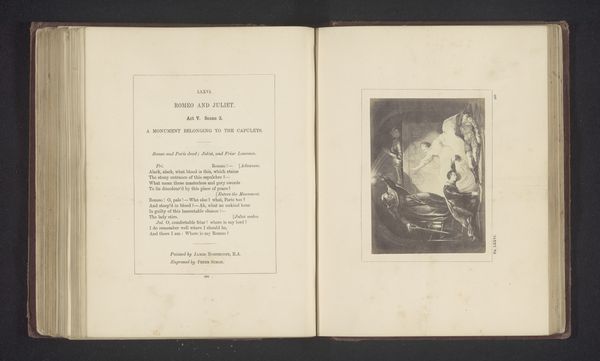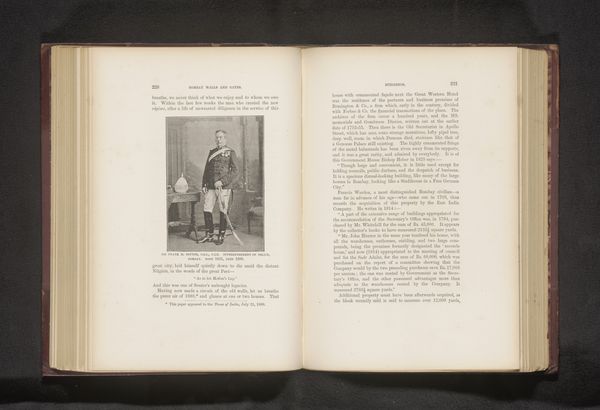
Fotoreproductie van een tekening van een portret van John Critchley Prince door W. Morton before 1880
0:00
0:00
drawing, print, paper, ink, engraving
#
portrait
#
drawing
#
aged paper
#
homemade paper
#
script typography
# print
#
sketch book
#
hand drawn type
#
paper
#
personal sketchbook
#
ink
#
hand-drawn typeface
#
thick font
#
handwritten font
#
engraving
#
historical font
Dimensions: height 141 mm, width 97 mm
Copyright: Rijks Museum: Open Domain
Curator: So, here we have a photogravure, "Fotoreproductie van een tekening van een portret van John Critchley Prince door W. Morton," predating 1880. The portrait looks to be etched or engraved, doesn’t it? The methods of production are crucial here. Editor: Yes, the material and technique immediately stand out. It’s a printed reproduction of a drawing, almost like a page torn from a book or sketchbook. What can you tell me about its original social context? Curator: Think about this book itself as a manufactured object. Consider the labour involved: the artist Morton's drawing, the engraver or etcher who translated that drawing, the printing process to produce multiple copies, the bookbinder assembling it all. Whose hands were involved, and what social class did they belong to? Was it meant to be affordable? What do you observe about its materials? Editor: The paper looks aged, almost handmade. I guess that makes me wonder, was the purpose of this drawing simply documentation, or was the print considered art in its own right? How does it challenge, or uphold, the boundaries between high art and mere reproduction? Curator: Exactly! Think about the relationship between the original drawing and its reproductive print. How does mechanical reproduction change the meaning or value of the original artwork? Is something lost in the translation from a unique drawing to a mass-produced print, or does the print gain new social value? Editor: It is intriguing to see art history not just in the final image, but also the work behind it all. This photogravure allows us to peek into a historical chain of material processes, of artistic and commercial decisions. Curator: Precisely! We see not just a portrait of a man, but a portrait of labour and materiality itself. I am very grateful we got the chance to see artmaking in such a specific way.
Comments
No comments
Be the first to comment and join the conversation on the ultimate creative platform.

